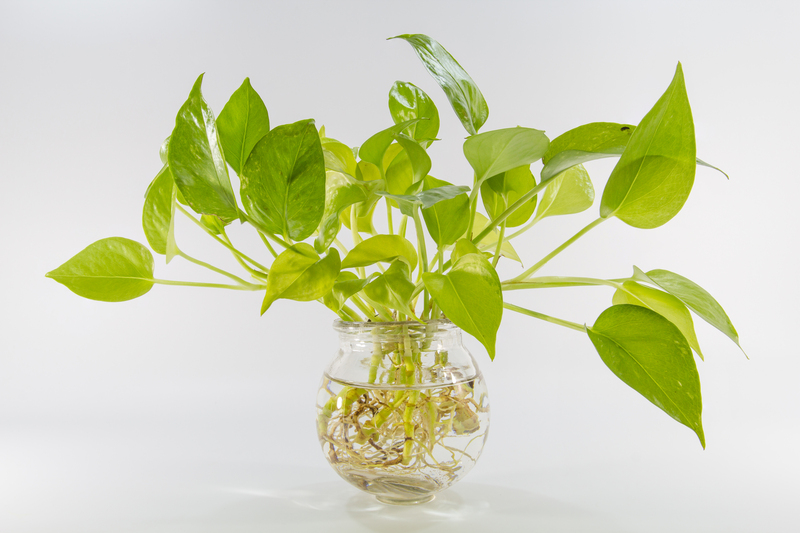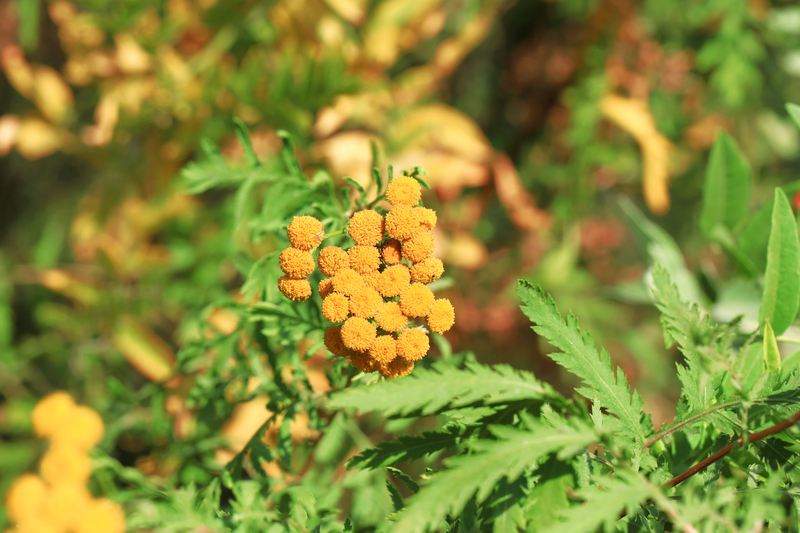Simple Techniques for a Weed-Free Garden
Posted on 13/06/2025
Simple Techniques for a Weed-Free Garden
Maintaining a weed-free garden might seem like a daunting challenge for gardeners of all experience levels. Weeds compete with your precious plants for nutrients, water, and sunlight, often leaving your flowers and vegetables struggling to thrive. Fortunately, with the right strategies, you can achieve a lush, healthy garden with minimal weed presence. In this comprehensive guide, we'll dive deep into simple yet effective ways to combat weeds and cultivate a beautiful, thriving garden that remains virtually free of invaders.
Why Is Keeping Your Garden Weed-Free Important?
- Enhances Plant Health: Weeds compete with garden plants for essential resources, reducing growth and yield.
- Improves Aesthetics: A garden without weeds looks neat and well maintained, increasing curb appeal and enjoyment.
- Minimizes Pest and Disease Risks: Some weeds harbor harmful pests and diseases, which can quickly spread to your garden plants.
- Saves Time and Effort: Implementing simple weed-control techniques reduces the time spent pulling weeds in the future.

Understanding Garden Weeds: Types and Growth Patterns
Before addressing weeds in your garden, it's crucial to understand the main types you may encounter. Weeds are generally categorized into:
- Annual Weeds: Complete their life cycle in one season (e.g., crabgrass, chickweed).
- Biennial Weeds: Take two years to mature and set seed (e.g., burdock, wild carrot).
- Perennial Weeds: Live for several years and are the toughest to control (e.g., dandelions, bindweed).
Knowing your enemy helps you apply the most effective weed management techniques and choose appropriate weed removal methods.
1. Start with Prevention: Don't Let Weeds Settle In
Maintain a Healthy Garden Soil
The first line of defense in any weed-free gardening strategy is healthy soil. Vibrant, nutrient-rich soil encourages dense planting, which leaves less room for weeds to take root.
- Add Organic Matter: Regularly incorporating compost or well-rotted manure boosts soil fertility, promoting robust plant growth that crowds out weeds.
- Test Your Soil: Check pH and nutrient content to ensure garden plants rather than weeds dominate your beds.
Choose the Right Plants and Plant Densely
Dense planting is a gardener's secret weapon for minimizing weeds. Plants that are spaced correctly create a living mulch, shading the soil and making it harder for weeds to establish.
- Fill Gaps: Whenever possible, use groundcovers or low-growing plants to fill empty spots in flower beds and borders.
- Interplant Vegetables: Mix short and tall crops to maximize space and reduce weed-friendly gaps.
2. Mulching: Nature's Blanket Against Weeds
One of the simplest and most effective weed prevention techniques is mulching. Mulch acts as a barrier, blocking sunlight and preventing weed seeds from germinating.
Types of Mulch for Weed Control
- Organic Mulch: Includes straw, grass clippings, bark chips, wood shavings, and compost. Organic mulch not only suppresses weeds but also improves soil structure as it decomposes.
- Inorganic Mulch: Options like black plastic, landscape fabric, or gravel can be highly effective in weed suppression but do not nourish the soil.
How to Apply Mulch for Maximum Effectiveness
- Weed First: Remove existing weeds before spreading mulch to prevent them from returning.
- Apply Generously: Spread a layer of 2-4 inches for most mulch types, ensuring full coverage around plants.
- Avoid Plant Crowns: Keep mulch a few inches away from the base of plants to prevent rot and disease.
Mulching is an ongoing process. Check mulch levels at least twice a year--add more as needed to maintain effective coverage.
3. Regular Weeding: Staying on Top of Garden Maintenance
Consistent garden weed removal is essential for a tidy, healthy garden. The earlier you catch weeds, the easier they are to control.
Hand Weeding Techniques
- Work After Rain: Soil is softer and weeds, roots and all, are easier to pull.
- Use the Right Tools: Hand forks, hoes, and weeding knives are ideal for loosening stubborn roots.
- Get the Roots: Always aim to remove the entire root system, especially for perennial weeds like dandelions.
Best Time for Weeding
Set aside time each week for weeding. Regular, light weeding sessions are more effective--and less overwhelming--than waiting until weeds have taken over.
4. Use Landscape Fabric and Barriers
Installing a physical weed barrier can drastically reduce weed growth in your garden beds and walkways.
- Landscape Fabric: Lay down breathable fabric before planting, covering it with mulch or decorative stones. Cut holes only where plants will grow.
- Cardboard and Newspaper: Layer moistened cardboard or several sheets of newspaper over the soil, then cover with mulch. This biodegradable barrier smothers existing weeds and blocks new ones.
*Tip: Avoid using plastic, except for paths or under permanent features, as it can interfere with water and air movement to plant roots.*
5. Water Wisely: Deprive Weeds of What They Need
How and where you water can make a significant difference in weed growth. Targeted irrigation systems are key for weed-free gardening.
Water the Plants, Not the Weeds
- Use Drip Irrigation or Soaker Hoses: These deliver water directly to plant roots and not to the spaces between, keeping weed seeds dry and unable to sprout.
- Avoid Overhead Watering: Sprinklers wet the entire seedbed, encouraging both your crops and weeds to germinate.
6. Embrace No-Dig or Low-Till Gardening
Frequent turning of soil brings dormant weed seeds to the surface, helping them sprout. Instead, no-dig techniques preserve soil structure and keep weed populations to a minimum.
- Apply Compost or Mulch: Lay organic matter on top of the soil and plant directly into it. This technique creates a barrier and slowly improves the soil below.
- Disturb Soil Sparingly: Only dig or till when necessary, and weed immediately after to remove any exposed seeds.
7. Be Vigilant with New Plants and Compost
Many gardens become infested with weeds introduced through contaminated compost or new plants. Take these extra steps to ensure your garden stays weed-free:
- Source Plants Carefully: Always check for and remove weeds from potted nursery plants before planting in your beds.
- Inspect Mulches and Soils: Make sure your mulch, compost, or topsoil is weed-free before spreading it in your garden.
- Compost with Care: Ensure your compost gets hot enough (at least 140?F/60?C) to kill weed seeds. Avoid adding mature weed seeds or invasive plant material to the compost pile.
8. Use Cover Crops to Suppress Weeds
Planting cover crops (or green manures) is one of the most effective long-term strategies for weed suppression, especially in vegetable gardens during the off-season.
- How Cover Crops Help: Fast-growing plants like clover, rye, or vetch quickly create dense foliage, crowding out weeds and protecting the soil from erosion.
- Easy to Incorporate: Simply sow cover crop seeds, allow them to grow, then cut or dig them in before planting your main crops.
Cover cropping not only keeps your garden weed-free, but also improves soil fertility and structure over time.
9. Solarization: Harness the Sun to Kill Weeds
Soil solarization is a powerful technique to eradicate persistent weeds, particularly before planting new beds.
- Prepare the Soil: Clear the area, level the soil, and moisten it thoroughly.
- Cover with Clear Plastic: Stretch clear plastic sheeting tightly over the soil surface, securing the edges.
- Let the Sun Work: Leave the plastic in place for 4-6 weeks during the hottest part of summer. The trapped heat kills weed seeds, pests, and many soil-borne diseases.
10. Stay Consistent: The Real Secret to a Weed-Free Garden
Ultimately, maintaining a weed-free garden isn't about a single fix--it's about consistently applying the right techniques. The most successful gardeners:
- Monitor Regularly: Keep an eye on your beds so you can tackle any new weed growth quickly.
- Combine Approaches: Use a mix of mulching, dense planting, hand-weeding, and barriers for the best results.
- Adapt with the Seasons: Change your weed management strategy to suit the weather and the needs of your plants.

Frequently Asked Questions About Weed-Free Gardening
How do I permanently get rid of weeds in my garden?
While it's nearly impossible to eliminate weeds forever, consistent use of mulches, physical barriers, regular hand-weeding, and proper planting techniques will keep your garden virtually weed-free.
Are chemical herbicides necessary for weed control?
Not necessarily! Many gardeners achieve excellent weed management with organic, chemical-free methods. However, persistent infestations may require selective, cautious use of weed killers as a last resort.
Should I pull weeds before or after watering?
It's easier to pull weeds after watering or a rainfall. The soil is softer, allowing you to remove both the weed and its roots more effectively.
Conclusion: Cultivating a Weed-Free Garden is Simple and Achievable
A vibrant, lush garden without pesky weeds is well within your reach. By following these simple weeding techniques--from mulching and dense planting, to barriers and vigilant maintenance--you'll create a garden that's both beautiful and low maintenance. Tackle weeds a little at a time, stay consistent, and enjoy watching your garden thrive, free from unwanted invaders!
If you're ready to transform your space, start today with these easy steps, and soon you'll have a flourishing, weed-free garden that's the envy of your neighborhood!

